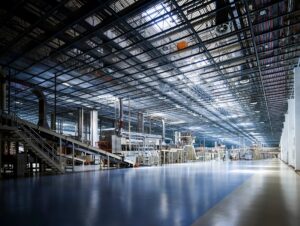In March 2020, the Federal Reserve took emergency steps to lower interest rates, an attempt to fend off a recession while the markets were panicking over the fallout from the spreading coronavirus threat. This followed three Fed rate cuts in 2019.
This past spring, interest rates dropped again to near record lows. Lower rates are generally thought to be good for the commercial real estate market, driving down the costs of borrowing and increasing investor interest. Lower interest rates drive borrowing activity, but it also is true that a lower-rate environment this late in the market cycle can be risky. Lower interest rates tend to drive up asset prices irrespective of how the assets are performing. It increases the likelihood that your clients will make bad decisions about the market.
This is an uncertain time for the U.S. economy and commercial real estate. There have been wild swings in the stock market, trade wars, domestic and international turmoil, and a looming presidential election later this year. Commercial real estate may be able to weather the next scare. Then again, given the uncertainty in the market, the volatility in the economy and the extraordinary length of this cycle, this also is a time when your clients run the risk of making mistakes. A low-rate environment increases their risk by tempting them to make unwise decisions about real estate deals — deals that could put them in line for major losses when the market actually turns.
At best, the outlook for commercial real estate is uncertain. The market is two years overdue for a correction, given the normal 10-year life cycle.
Looking back
Remember what happened in the lead-up to the Great Recession? Investors rushed to buy properties at the peak of the market. There was a price bubble as well as an oversupply of new properties. Some lenders allowed investors to borrow well in excess of the true value of the asset, assuming that the values would continue to rise.
The commercial real estate industry was flourishing with easy access to debt financing and the seemingly insatiable appetite of buyers to acquire assets. That ended abruptly with the financial crisis. The market crashed, wiping out many late-cycle investors.
On the face of it, the commercial real estate market still looks healthy. The performance of the loans underpinning commercial mortgage-backed securities (CMBS), for example, has rarely been stronger. CMBS delinquencies have remained low, as has the volume of loans in special servicing. CMBS performance normally provides a window into how the overall market is doing.
Property values in several asset categories are at a record level. Sales transactions have remained robust and commercial mortgage origination volume also was near a record in 2019, according to reports from the Mortgage Bankers Association. The market is on firmer footing than it was a decade ago. Lenders have tended to remain more disciplined while investors have shown more caution. There is no reason to believe that the coming downturn will be as severe, but it will bring some pain.
At best, the outlook for commercial real estate is uncertain. The market is two years overdue for a correction, given the normal 10-year life cycle. Many investors have likely already overreached, given the relatively cheap and easy availability of capital to finance asset purchases.
One of the problems today is that many commercial real estate assets across the U.S. could be overvalued. In many cases, the property’s value hasn’t risen so much based on rising incomes generated by these properties, but by the low interest rates. As the cost of lending has become cheaper, more people have jumped in to refinance and/or purchase commercial real estate. This has increased asset prices and lowered the return on investments. For the buyer, low interest rates initially work in their favor, but what happens when they have to refinance a loan in a tougher market? This is where the risk lies.
Risk factors
In a downturn, your investor clients will be in an OK scenario if they have a property that is performing well and they can afford a 65% loan-to-value refinance. Many others are likely to struggle, especially if they bought properties late in this cycle at high prices with low interest rates.
The commercial real estate buyer of today could be faced with a combination of problems tomorrow. First, a property could lose value, forcing owners in need of a refinance to raise more capital to meet a lender’s debt-load requirements. Second, interest rates could rise again, which would make the debt more expensive, as well as make it more difficult to borrow at the previous level.
Lastly, traditional and private lenders could pull back from the market, giving investors fewer financing options. Those that remain will almost certainly require more equity in the deal. If an investor is unable to uncover funding from other sources, the property could be headed for trouble. Ultimately, each of these problems become worse when rates are set at an artificially low level and drive up prices.
Certain property types are already risky. The most obvious category is traditional retail. Last year was the largest to date for retail-store closings. Capitalization rates on some retail assets, such as lower-quality suburban malls, have been going up while values are dropping. In addition, as interest rates have dropped, oversupplied property types such as self-storage facilities are seeing lower values.
In March 2020, the coronavirus threat caused the hotel world to grind to a sudden halt, with occupancy rates plummeting and owners trying to figure out how to keep the doors open. Special servicers were gearing up for what was expected to become the first wave of property types in debt restructures and foreclosures.
Lower values and oversupply are causing an even bigger problem in certain office markets. A number of cities are seeing a significant uptick in new office supply, which is bound to put pressure on existing office properties. Tenants who have traditionally been paying average per-square-foot rental rates have been offered concessions in some markets. In many cities, the office vacancy rate is in the double digits. It is not hard to imagine that some of the owners of these buildings will be left with significant vacancies in the next downturn, resulting in a trip to a special servicer.
● ● ●
It behooves commercial mortgage brokers to be mindful of these risks and pass on their concerns to their clients. An artificially low interest rate may look good to your clients now, but they need to pay attention to where the market is headed as well as the position they will be in when credit is tighter and rates are significantly higher.
Author
-
Tommy Snyder is president of 1619 Capital Partners, a Dallas/Fort Worth-based investment-consulting company that specializes in commercial real estate lending and investments. After more than nine years with C-III Capital Partners, Snyder left to form his new company — offering clients a range of expertise, from loan restructures and lending products to investment opportunities and guidance through the world of note and real estate-owned (REO) auctions.
View all posts






